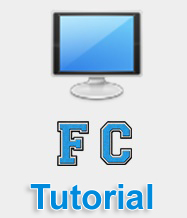Computer Virus
What is Computer Virus
A Virus is an umbrella term used to describe malicious programs that unwantedly install themselves onto your computer.Computer viruses are destructive programs that delete or corrupt files, interfere with your computer operations and reproduce themselves to fill disk or RAM space on your computer. There's typically a piece of code that causes an unexpected and usually malicious event to occur. Computer viruses are often disguised as games or images with clever, inviting titles.
The virus can cause damage in many forms. A mild version, like the Melissa virus, can spam other email addresses and social media accounts. Other worms can spread into your computer to delete files, erase hard disks, cause malfunction, and steal private information. To know more about how to detect virus from your computer, then Virus removal guidelines is a best platform for all.
Types of Computer Viruses
A computer virus is one type of malware that inserts its virus code to multiply itself by altering the programs and applications. The computer gets infected through the replication of malicious code.
Computer viruses come in different forms to infect the system in different ways. Some of the most common viruses are;
Boot Sector Virus
This type of virus infects the master boot record and it is challenging and a complex task to remove this virus and often requires the system to be formatted. Mostly it spreads through removable media.
Direct Action Virus
This is also called non-resident virus, it gets installed or stays hidden in the computer memory. It stays attached to the specific type of files that it infect. It does not affect the user experience and system's performance.
Resident Virus
Unlike direct action viruses, resident viruses get installed on the computer. It is difficult to identify the virus and it is even difficult to remove a resident virus.
Multipartite Virus
This type of virus spreads through multiple ways. It infects both the boot sector and executable files at the same time.
Polymorphic Virus
These type of viruses are difficult to identify with a traditional anti-virus program. This is because the polymorphic viruses alters its signature pattern whenever it replicates.
Overwrite Virus
This type of virus deletes all the files that it infects. The only possible mechanism to remove is to delete the infected files and the end-user has to lose all the contents in it. Identifying the overwrite virus is difficult as it spreads through emails.
Spacefiller Virus
This is also called 'Cavity Viruses'. This is called so as they fill up the empty spaces between the code and hence does not cause any damage to the file.
File infectors
Few file infector viruses come attached with program files, such as .com or .exe files. Some file infector viruses infect any program for which execution is requested, including .sys, .ovl, .prg, and .mnu files. Consequently, when the particular program is loaded, the virus is also loaded.

